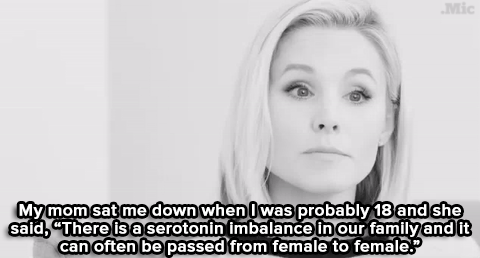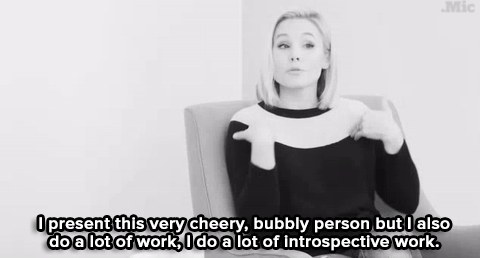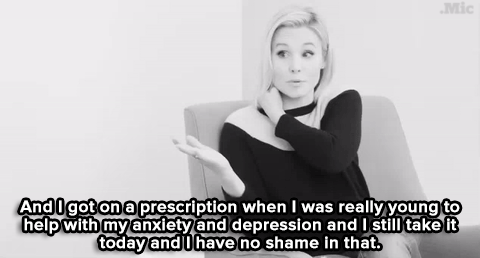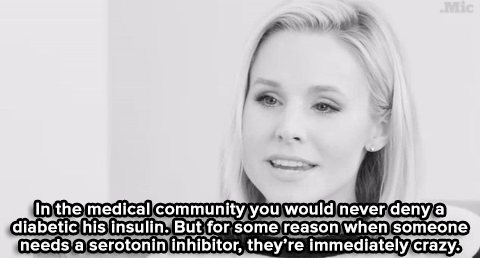Just your average college chemistry undergrad blogging about the exciting and fun perils of being in love with science.
Don't wanna be here? Send us removal request.
Text
Any tv show: science is amazing and can do literally anything very quickly
Me, a scientist: science is the worst. Nothing works and even simple things take literally forever
461 notes
·
View notes
Text
Stand up with Science
Below the cut is a way for people to stand up for science against the stifling of their voice. I ask that you spread the word and pass it on, even if you don’t think this is a way for you to support science. There are all sorts of ways for us to stand with science.
From a colleague of mine, I pass this message to you. Don’t let your voice be unheard and let us be in solidarity.
"To all my friends and colleagues in academia-
I should warn you beforehand, that this is a long-ish post, a call to action in response to the Trump administration's push to keep scientific facts from the public. In short. I have a modest proposal for you...
In the past week, the Trump administration has issued orders of the USDA and EPA that have signaled the administration's intention to determine what scientific information is revealed to the public. Essentially, Trump and his colleagues have indicated that any research that runs contrary to the administration's political agenda should be either modified or withheld from the public altogether. As a staunch believer in empiricism, peer-review, data, transparency, and the scientific method as tools for moving us (i.e., people) forward, I disagree with the Trump administration's actions in the strongest terms.
If there is a silver lining in this mess, it is that the administration has issued orders specifically related to the public dissemination of the departments' research. This includes press releases, announcements, social media engagement, and the like. However, my understanding is that the administration cannot keep any of the federal departments from conducting research and publishing it--unsanitized--in peer-reviewed journals. Unfortunately, most of the public does not have access to these journals. Even if they did, the information in scientific articles (both in the "hard" and "soft" sciences) can be difficult for a layperson to understand.
This is where we come in. I have secured webspace on which I intend to begin constructing a continuously-updated repository of scientific studies performed by (or funded by) personnel in the 15 federal departments in the US: the Department of Agriculture, the Department of Commerce, the Department of Defense, the Department of Education, the Department of Energy, the Department of Health and Human Services, the Department of Homeland Security, the Department of Housing and Urban Development, the Department of the Interior, the Department of Justic, the Department of Labor, the Department of State, the Department of Transportation, the Department of the Treasury, and the Department of Veterans Affairs; as well as other independent agencies (e.g., NASA). Ultimately, I hope that the site will become an extensive collection of links to scientific studies with two- or three-sentence synopses of what the studies are about. These synopses will be easily digestible by laypersons. In essence, I want the site to adopt the function of the departments that the Trump administration is trying to remove--public dissemination of critical scientific information. Needless to say, this is going to take some effort.
I am only in the beginning stages of figuring out the logistics of how this will work, the form the site will take, and issues like that. I am presently in the process of designing the site. As of now, it will be housed (though not yet published) at:
www.publicscience.info
But before getting too far ahead of myself, I need to see if anyone in the academic community wants to contribute to the site on an as-you-feel-like-it basis. So, please feel free to share this information in any way you see fit.
Obviously, there will be no obligations to it; we all have teaching, writing, and publishing to do. That said, if you are interested in potentially contributing to the site, please e-mail me to let me know at:
At the least, I will need your e-mail address, but if you want to leave your name and affiliation, that would be okay too.
Helping will take many forms, but primarily I hope to build an extensive and far-reaching stable of scholars to assist in updating the lists of studies that appear in peer-reviewed journals (nothing that has not undergone peer-review will be posted. It shouldn't be too much work, and you are welcome to contribute as much or as little as you like. Think of it as a wiki designed to circumvent the censoring of scientific information.
All the details will be ironed out in the next eight weeks or so, and I will keep all those who are interested apprised.
Trump can force federal departments to withhold data and release scientific information to the public at his discretion. I suppose he is their boss. But we don't need to follow Trump's rules. He's not OUR boss.
We're his."
2 notes
·
View notes
Photo

Announcing Chemunicate: Working with researchers to make easy-to-understand graphical summaries of current chemical research! More details here: http://wp.me/P4aPLT-1PS
71 notes
·
View notes
Photo

Science - our one, true love.
P.S. We have this design on shirts, stickers, and mugs! :D
325 notes
·
View notes
Photo






When people ask me what I’m most excited and optimistic about when it comes to online education and science communication, I usually say some version this:
“We have eliminated the gatekeepers that long limited access to knowledge. People all over the world can now access information with a single click, yadda yadda yadda, YouTube, Tumblr, yadda yadda, the world is a better place."
Of course that fails to address the huge linguistic elephant in the room: A vast majority of the world’s good science communication is in English, and not everyone on Earth speaks English.
Not anymore (for video at least)! A recent upgrade by YouTube may help solve that problem.
Now, videos with English captions can be automatically translated into any of 81 languages, unlocking the power of Google’s translation magic for the purposes of science and education. Simply follow the directions above.
If you’re a creator, make sure you have uploaded an accurate English transcript for your videos so the translations are as high-quality as possible. I think this is universally available across YouTube, and the translations look pretty good (at least for the languages I can semi-recognize). I’d love to hear feedback from my multi-lingual followers on how this works for you.
Science and education on YouTube was already awesome before. Now that it’s in 81 languages? As they say in Deutsch: Über-awesome.
877 notes
·
View notes
Photo

We need to talk about the bad science being funded
Spectacular failures to replicate key scientific findings have been documented of late, particularly in biology, psychology, and medicine.
A report on the issue, published in Nature this May, found that about 90 percent of some 1,576 researchers surveyed now believe there is a reproducibility crisis in science.
While this rightly tarnishes the public belief in science, it also has serious consequences for governments and philanthropic agencies that fund research, as well as the pharmaceutical and biotechnology sectors. It means they could be wasting billions of dollars on research each year.
589 notes
·
View notes
Text
If there’s one thing I see people consistently miss, especially assholes, it’s that science is a communal structure. Take away the community, and there is no science. Science is a not a concept that could exist without people. There is no pure abstract form of science. (This is the equivalent of saying there is no theory of everything, btw). Science only exists as a method of knowledge in the community. That’s why you sometimes hear people say that science is a discussion. They mean that much more literally than many people realize. Every field is a discussion, in the form of papers and studies, between the people who study that field. The idea of the single isolated genius is not only false, but laughable. Every discovery exists as a topic in the discussion that is that field. There is no such thing as a discovery in a field of science that isn’t part of that discussion … the closest structure is information/a discovery from outside the field of science because the field is the discussion, and what is inside of the field is what is in that discussion. That’s a definitional ‘is’. Things that aren’t part of the discussion aren’t part of the field. Because science is a communal method of knowledge. People can definitely discover stuff outside of science. But it’s not part of a field of science until they discuss it with others and it becomes part of the conversation. That’s literally how it works.
296 notes
·
View notes
Photo

Scientific practice can never exist in a vacuum and must always work in conjunction with everyday life. Rosalind Franklin was best known for her role in pioneering the use of X-ray diffraction, which later aided her discovery of “the secret of life” — the structure of DNA.
363 notes
·
View notes
Photo

“Life is a flower of which love is the honey.”
-Victor Hugo
14K notes
·
View notes
Photo






“A boy and his atom” is officially the tiniest stop motion film.
IBM made this film by manipulating single carbon atoms on a copper surface. The size of this is unimaginable, as each frame is 45 X 25 nanometres and would take 1000 of these frames laid end on end to span the width of a hair.
The images were taken using a scanning tunnelling microscope which picks up images based on the concept of quantum tunnelling. The images are not of atom’s themselves as they are impossible to see, but is an interpreted image based on the current picked up by the microscope when a voltage difference is applied.
(io9)
4K notes
·
View notes
Photo


Some studyspo subject puns to keep you going. Hang in there, buddy! 😁
661 notes
·
View notes
Photo









Watch: Kristen Bell opens up about the mental health double standard and how she manages her own struggle.
Follow @this-is-life-actually
658K notes
·
View notes
Text
Reworking STEM for the 21st century

In the photo (from left): Michael V. Drake, MD, president of Ohio State University; C. Daniel Mote, Jr., PhD, president of the National Academy of Engineering; and Jeff Wadsworth, PhD, president & CEO of Battelle.
Yesterday, I joined the National Academy of Engineering/Battle symposium at The Ohio State University on the development of the STEM workforce. It’s difficult to over-emphasize the importance that STEM education will play in our technologically-dependent economy.
All individuals deserve access to a quality, robust STEM education, for this ensures our nation has a top-notch, diverse science and engineering workforce. NSF works to ensure this by investing in STEM education across a wide spectrum – from kindergarten through post-doctorate education, for both students and teachers.
STEM fields are the primary drivers of American competitiveness in an increasingly global economy. Research shows that more than half of U.S. economic growth over the last 50 years has resulted from improved productivity brought about by STEM-led innovations. This is why expanding and extending STEM opportunities across the Nation is critical to our future.
16 notes
·
View notes
Photo

“For me, science is another language we use to talk about the same miracles that faith talks about.”
461 notes
·
View notes
Text
Catalyzing Advocacy for Science and Engineering (CASE)
I'm super stoked to be in the capital right now, so I hope I'll have some time to blog about my adventures of life and science and policy while I'm here. But this chemist will be giving you the lowdown on her amazing experience in D.C.! So far, survived my first red eye flight across the country. And of the minority who can still be cheery after it. Funnily enough, I feel tired but I'm too stoked to be /that/ tired. But a nap before breakfast and exploring sound fun! -CV

#AAAS#AAAS CASE#repping ACS#acs#american chemical society#catalyzing advocacy for science and engineering#CASE#american association for the advancement of science#adventures#travel#From CA to DC
1 note
·
View note
Quote
We tell our women “get into science, get into math, get into the pipeline.” Who wants to be in a pipeline full of acid?
Alicia Menendez - The View
I’m at the car dealership, waiting for my service recall to be completed, and this statement caught the attention of every woman in the room. Unsurprisingly, they all nodded in assent while the few men in the room looked uncomfortable.
The point is valid: even if access to STEM and other male dominated fields is made available, we need to do something about the culture in the field. Access to a pipeline full of acid, while it is still access, serves to maintain inequality.
(via glintglimmergleam)
9K notes
·
View notes
